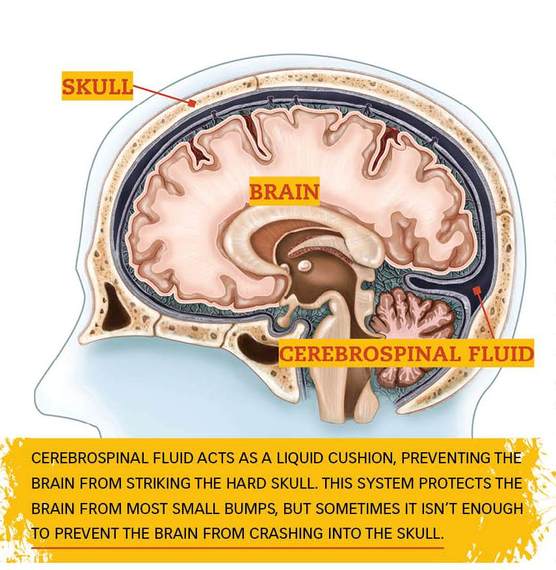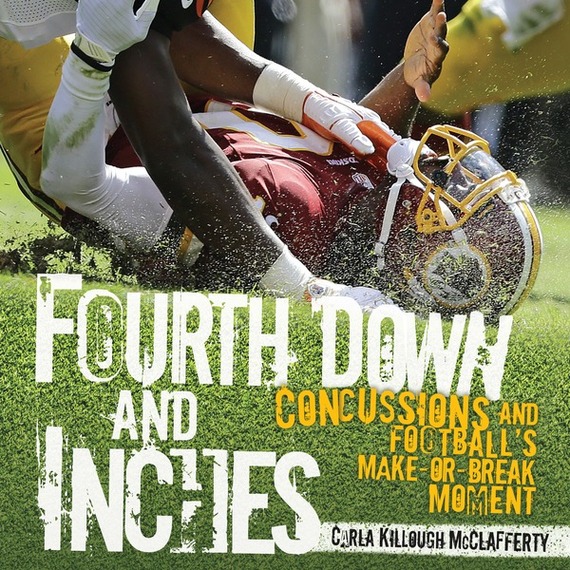In a recent HuffPost article, Brett Favre, the legendary quarterback, revealed in that he has fears for his future based on possible brain damage over a 20 year career in the NFL. Favre is only one of many retired NFL players who is  concerned about the long term effects of repeated hits to the head or CTE (Chronic Traumatic Encephalopathy) that results in headaches, depression, lack of concentration, sleep disorders, memory loss and a host of other impaired brain functions. In addition to direct blows to the head, which can make the floating brain crash into the skull, this condition is aggravated by hits that cause sudden stops to running. The effect is cumulative and can destroy the quality of life after a football career is over.
concerned about the long term effects of repeated hits to the head or CTE (Chronic Traumatic Encephalopathy) that results in headaches, depression, lack of concentration, sleep disorders, memory loss and a host of other impaired brain functions. In addition to direct blows to the head, which can make the floating brain crash into the skull, this condition is aggravated by hits that cause sudden stops to running. The effect is cumulative and can destroy the quality of life after a football career is over.
 Yet, football is a sport that people are passionate about. Boys still want to play. Many will dream of a career in the NFL. What's a parent or a coach to do? My suggestion: read Carla Killough McClafferty's brilliant book Fourth Down and Inches: Concussions and Football's Make-or-Break Moment. This is a book not to be missed by any young person from grade 6 up who is considering entering the game. It should be required reading for all high school coaches, who should then require that their players read it. And, if you think this book is only for boys, you should know that the second ranked sport for concussions is girls' soccer.
Yet, football is a sport that people are passionate about. Boys still want to play. Many will dream of a career in the NFL. What's a parent or a coach to do? My suggestion: read Carla Killough McClafferty's brilliant book Fourth Down and Inches: Concussions and Football's Make-or-Break Moment. This is a book not to be missed by any young person from grade 6 up who is considering entering the game. It should be required reading for all high school coaches, who should then require that their players read it. And, if you think this book is only for boys, you should know that the second ranked sport for concussions is girls' soccer.
McClafferty begins with a riveting account of the history of this violent sport, which President Teddy Roosevelt once considered banning because it caused the death of some promising young men. Over the years it has become safer, and the statistics are very much in favor of escaping a playing career relatively unscathed. But the author wants you to consider the risks, especially when it comes to treatment for head trauma. Up to this point most players and coaches have minimized the significance of the damage of a head "ding." So what if you're a little dizzy for a few minutes, or see stars. Shake it off and get back in the game. Not so fast, say the experts. Just because you can't see the damage doesn't mean that it's not there. After settling a NFL players' class action suit of $765 million to help mitigate some of the effects of CTE, the NFL is also considering changing the game to make the hits even less damaging. After all, its future success depends on a steady supply of young talented players, which could be severely limited if parents don't encourage their sons to participate in the sport while still in school.
Fourth Down and Inches is another example of the kind of book the Common Core State Standards want students to read. It is well-crafted, provocative, well-researched, and lays out the facts of the consequences and probability of brain injury vs the love of the game. It introduces the concept of acceptable risk. It is definitely not anti-football. A friend of mine gave the book to her 14 year old son, Leo, who plays 8th grade football. Leo said, "Reading about head injuries enlightened me. It made want to buy a better helmet. Also, now I will tell my coach if I get a hard hit to the head and have a headache. I will go out of the game if this happens and realize I need time to heal."
This is an important book to read while your brain is intact and you can still think straight.
For more information, here is Publishers Weekly starred review.
